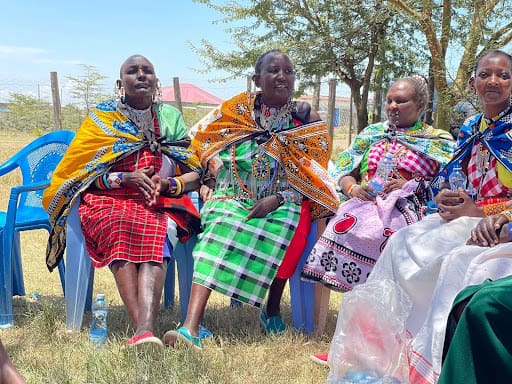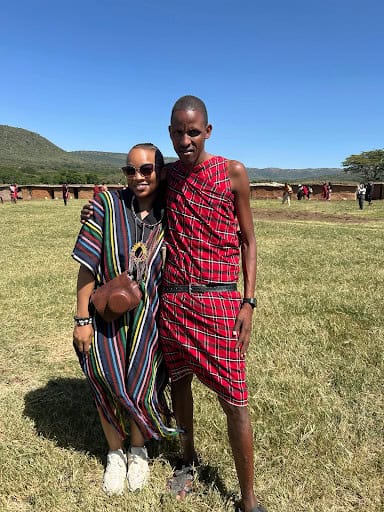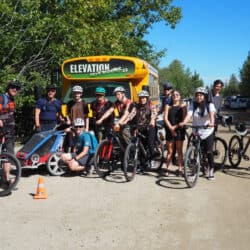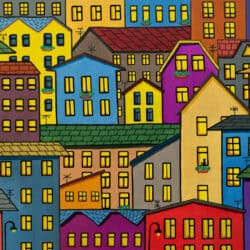At the 25th International Funders for Indigenous Peoples Global Conference in Kenya, one theme stood out, Rachael Sonola writes: Indigenous sovereignty is not just about land or governance; it is about the power to decide, to shape, and to thrive on our own terms.
This contribution is part of The Circle on Philanthropy’s Community Harvest Program, an initiative that invites The Circle’s members, partners, and kin to share reflections, learnings, and insights that contribute to an ongoing and evolving dialogue within our network. Through written pieces, poetry, visual art, song, and other creative expressions, the program affirms the power of shared experience and storytelling to transform the philanthropic sector to redistribute wealth, activate wisdom, and strengthen organizational infrastructure in service of Indigenous Peoples, organizations, communities, and nations.
Rachael Sonola’s piece reflects The Circle’s value of curiosity. It invites the settler philanthropic sector to listen, adjust, and learn by doing things differently. It raises generative inquiries and uplifts the wisdom of Indigenous communities in ways that make the sector wiser.
To learn more about The Circle, please visit the-circle.ca.
The landscape stretched before us, vast and unyielding, much like the stories that would be shared within its embrace. The 25th International Funders for Indigenous Peoples (IFIP) Global Conference – held in February 2025 in Kenya, its first gathering on the African continent – had drawn leaders, activists, and storytellers from around the world, each bringing a truth that demanded to be heard. As the conversations unfolded, one theme echoed louder than the rest: Indigenous sovereignty is not just about land or governance; it is about the power to decide, to shape, and to thrive on our own terms.
Defining true empowerment
In the opening session, a woman from the highlands of Australia spoke of how her community had struggled for decades, not because of a lack of vision but because of a lack of trust from funders. “We don’t need permission to dream,” she said. “We need the means to make those dreams real.” The words settled heavily in the room, a reminder that for many Indigenous communities, restricted funding had long been a cage rather than a key.
We don’t need saviours. We need partners.
IFIP attendee
Another leader shared a chilling truth that his people had been displaced by palm oil plantations, had witnessed their lands eroded, their rivers poisoned, and their women suffering from an epidemic of maternal deaths. When they pleaded for resources, they were met with limitations, guidelines, and conditions that did not reflect their lived realities. “We don’t need saviours,” he said, his voice steady but defiant. “We need partners.”
For many at the conference, this was not new. They had lived it. They had fought against it. And now, gathered together, they were demanding better.
The unbreakable threads of leadership and justice
As discussions deepened, a fundamental truth emerged: Indigenous leadership is intersectional. Women, youth, and elders all play critical roles in sustaining movements and traditions. But barriers remain, particularly for Indigenous women who bear the weight of multiple injustices.
An elder with a voice full of wisdom and sorrow shared her people’s struggle. “Our girls are the most disadvantaged,” she said. “They carry the burdens of poverty, of war, of exclusion. But they are also our future.” In her words was a call to action, one that resonated across nations and languages. Indigenous-led solutions needed investment, but not in ways that demanded assimilation into colonial structures. They needed to be supported in ways that honoured their autonomy, their knowledge, and their right to determine their own futures.
From the mountains of Colombia to the deserts of Kenya, the message was clear: true environmental justice cannot be separated from Indigenous rights. Conservation efforts that exclude Indigenous communities are not a solution; they are another form of displacement.
Stories that heal, stories that build
In one of the most powerful moments of the conference, participants gathered for a storytelling workshop. The air was thick with emotion as stories were woven together, some carrying generations of pain, others carrying hope.
A woman from East Africa stood to share her journey, a story of survival. As a child, she had lost her mother in an act of violence that went unpunished. She had been left to navigate a world that saw her as invisible, a girl meant to be married off rather than educated. But she had fought. Through hardship, through loneliness, through the sting of rejection, she had risen. Now, standing before us, she was a leader. “I give sanitary pads to girls in my village,” she said, her voice unwavering. “Because I never want another child to experience what I did.”
The room was silent, then filled with the quiet strength of nods, of understanding. This was why unrestricted funding mattered. Not just for policies, not just for projects, but for people. For stories like hers.
A journey into the heart of the Maasai
Beyond the conference halls, my journey led me to Narok County, where the Maasai people stand as living testaments to resilience, tradition, and transformation. Their vibrant culture, deeply rooted in ancestral knowledge, continues to shape their identity even as they embrace new opportunities.
The women: Keepers of culture and change
The women are the backbone of their communities, carrying centuries-old traditions while forging new paths for the next generation. Their artistry is evident in the intricate beadwork they create, each colour and pattern telling a story of identity, status, and history. But beyond their craftsmanship, these women are leaders in community development, spearheading women-led cooperatives that bring their handmade work to global markets, supporting families and preserving their heritage.

Despite challenges such as early marriage and limited access to education, many Maasai women are breaking barriers. They are pursuing education, entrepreneurship, and leadership roles, proving that culture and progress can walk hand in hand. Seeing their resilience and determination was both inspiring and humbling, an affirmation that true empowerment begins within the community itself.
The warriors and the dance of strength
For Maasai men, the journey to becoming a warrior (moran) is one of endurance, discipline, and deep cultural significance. From a young age, they undergo rites of passage that prepare them for leadership, training in herding, survival skills, and the protection of their community.
One of the most captivating traditions I witnessed was the adumu, the famed “jumping dance” performed during the Eunoto ceremony. In this powerful display, young warriors gather in a circle, their voices rising in rhythmic chants. One by one, they leap into the air, jumping as high as they can without bending their knees, a symbol of vitality, strength, and readiness for leadership. The higher they jump, the more they impress their peers and elders, earning respect and admiration.
Draped in their signature red shúkàs and adorned with intricate beadwork, the Maasai warriors move with grace and confidence, embodying the resilience of their people. The energy in the air was electric, a testament to the enduring power of tradition in shaping identity and community bonds.

Honouring the past, embracing the future
My visit to the Maasai Indigenous community was a profound reminder that tradition is not a barrier to progress; it is the foundation upon which communities build their future. The Maasai people continue to honour their past while embracing new opportunities, ensuring that their rich cultural heritage remains alive for generations to come.
As I left Narok County, I carried with me not just the memories of their traditions but the lessons of resilience, pride, and the importance of cultural preservation. The Maasai people stand tall, just like the warriors who leap toward the sky, reminding us all that strength is found in identity and that the future is shaped by those who cherish their past.
A future defined by Indigenous voices
As the conference drew to a close, one thing was clear: Indigenous people are not asking for charity. They are demanding justice. They are demanding a world where funding is not a gift but a recognition of rights. Where resources flow to communities without conditions that strip them of their power. Where their voices lead the way.
When you invest in Indigenous people, you are not just funding a project; you are funding generations.
IFIP attendee
One attendee captured it best: “When you invest in Indigenous people, you are not just funding a project; you are funding generations.”
This gathering had been more than a conference. It had been a reckoning. A reminder that the most powerful solutions will always come from those who live them. And as the delegates parted ways, the wind carried their words, their demands, their dreams, woven together, unbreakable, unstoppable.

